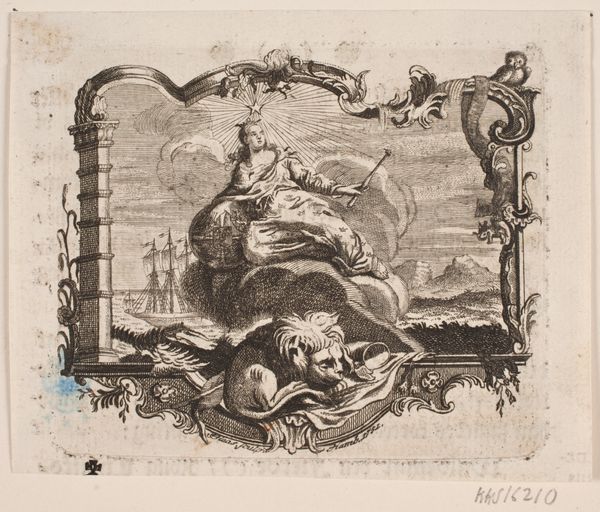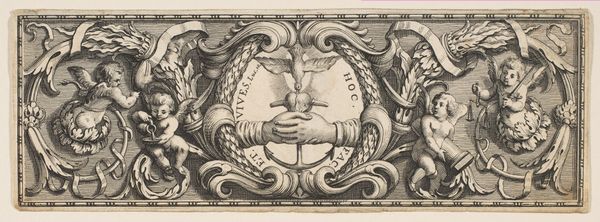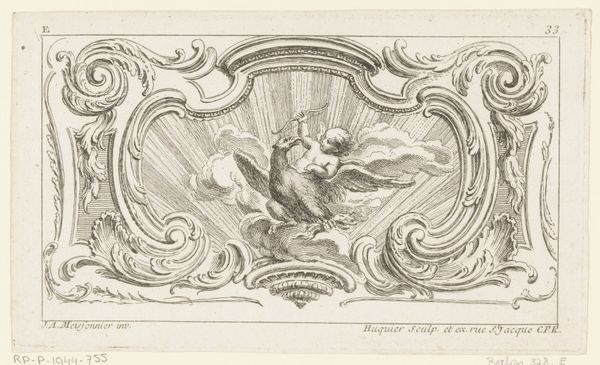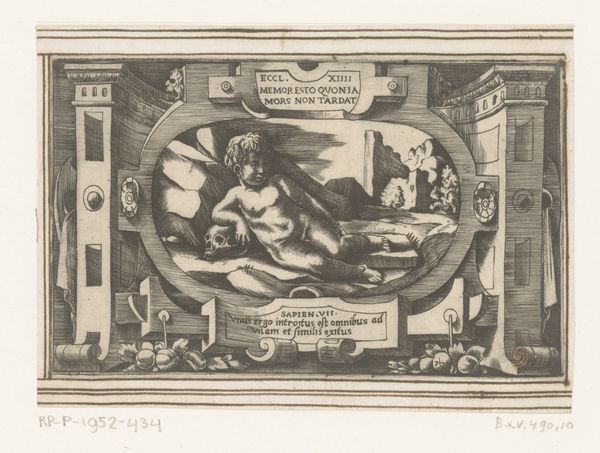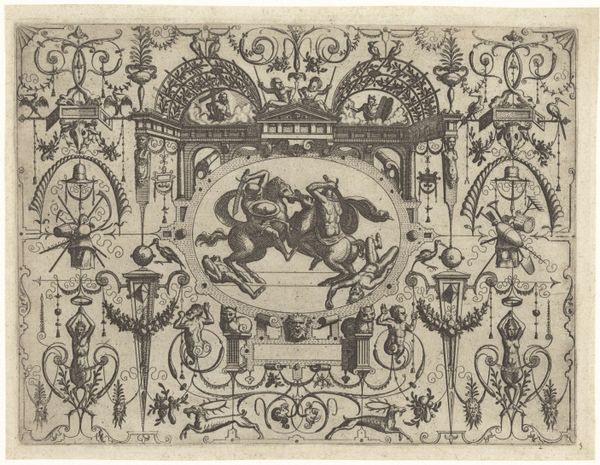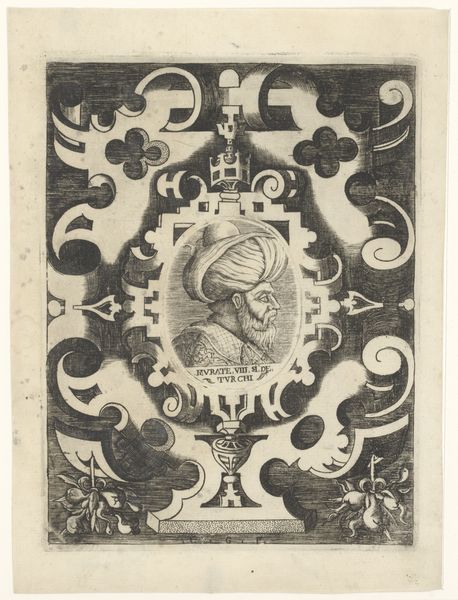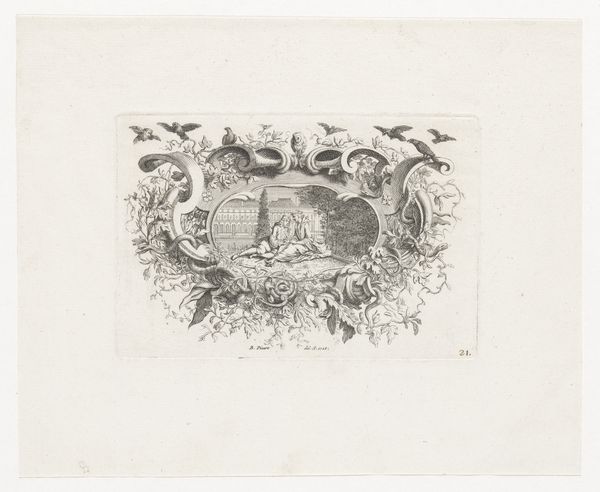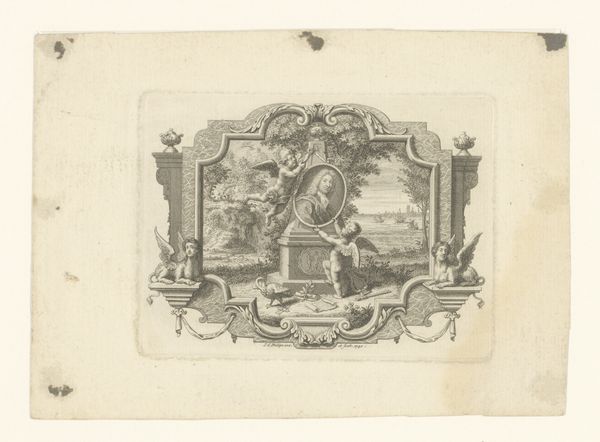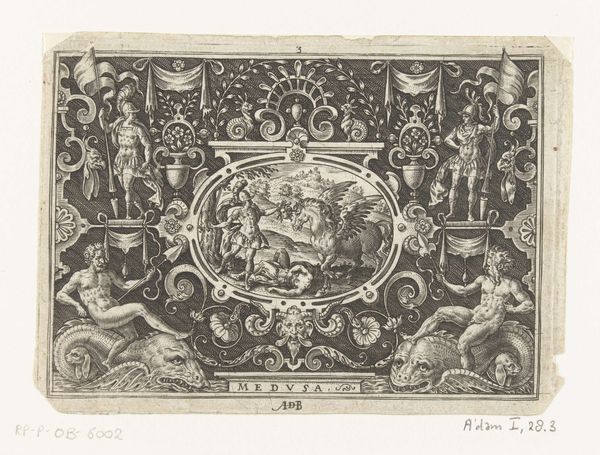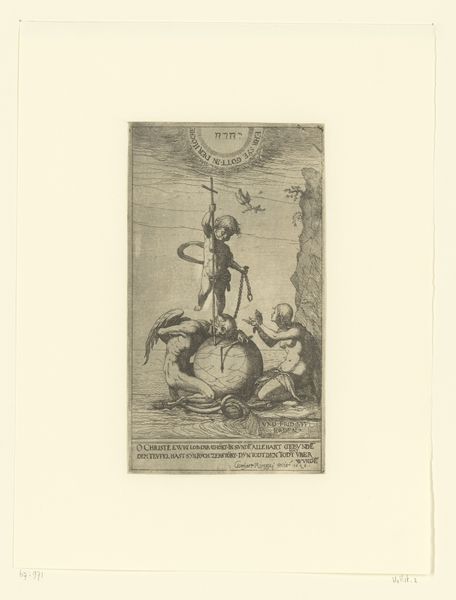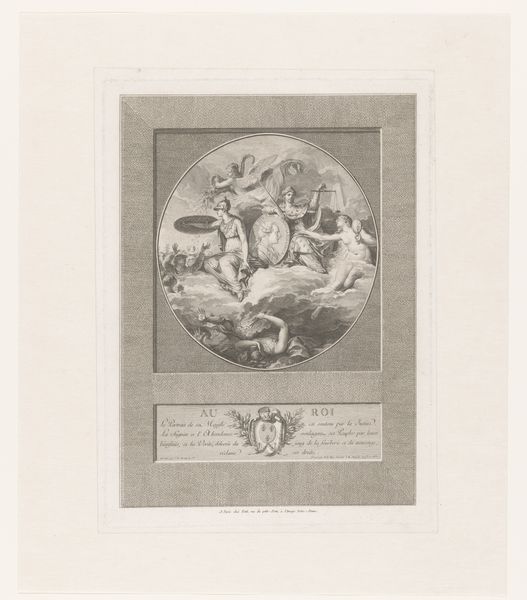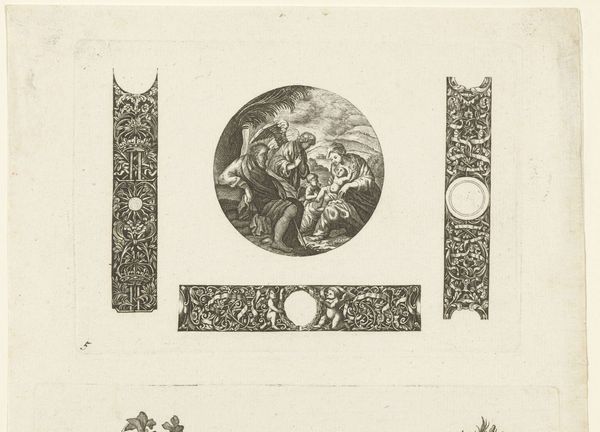
print, engraving
#
portrait
#
pen drawing
# print
#
old engraving style
#
mannerism
#
figuration
#
line
#
history-painting
#
engraving
Dimensions: height 102 mm, width 164 mm
Copyright: Rijks Museum: Open Domain
Curator: I'm struck by the intricate framing around this image. Editor: Indeed, this is an engraving of Narcissus, completed sometime between 1536 and 1569. It is attributed to Georges Reverdy and currently held at the Rijksmuseum. What draws you to the framing in particular? Curator: The entire composition, frankly, speaks to Mannerist sensibilities—the contorted pose of Narcissus himself, framed by those almost aggressively ornate decorative motifs, grotesque masks, fruit garlands. It feels intentionally theatrical, almost oppressive. Editor: Yes, Narcissus is literally framed, trapped by his self-absorption. It’s a clever visual metaphor, using the image’s visual language. But tell me, what does the figure of Narcissus represent here? Why this persistent interest in this story, down through centuries? Curator: Well, on the surface, Narcissus warns against vanity, right? Don’t become so infatuated with yourself that you ignore the world around you. But on a deeper level, I think it taps into anxieties about identity. Consider the time this engraving was made, a period of enormous social and religious upheaval. People were questioning established norms. The image could be interpreted as reflecting these uncertainties—a caution against losing oneself in introspection while society transforms. Editor: It is as though Reverdy anticipated our modern obsession with the self, an obsession fueled and amplified by social media. The pool reflecting Narcissus, then, foreshadows the mirrored surface of our screens. But there is also the symbol of inevitable death. He wastes away because of his self-infatuation, which in its own right may be seen as a comment on culture itself, dooming some through over-focus on the wrong reflections. Curator: So you are saying the enduring popularity of this Greek myth has more to do with its adaptability across social contexts? A flexible container of ideas concerning selfhood, from antiquity to our digitally-mediated present? Editor: Exactly! It's a reflection that changes as the pool does, its cultural and symbolic interpretations altered, even inverted by the shifting nature of things. It's a rather bleak reflection, wouldn't you say? Curator: Absolutely. There is little to no background here; all of the emphasis has been shifted to Narcissus in the moment before he fades away. But our discussion today suggests just how multifaceted images can become across generations of interpretation.
Comments
No comments
Be the first to comment and join the conversation on the ultimate creative platform.
